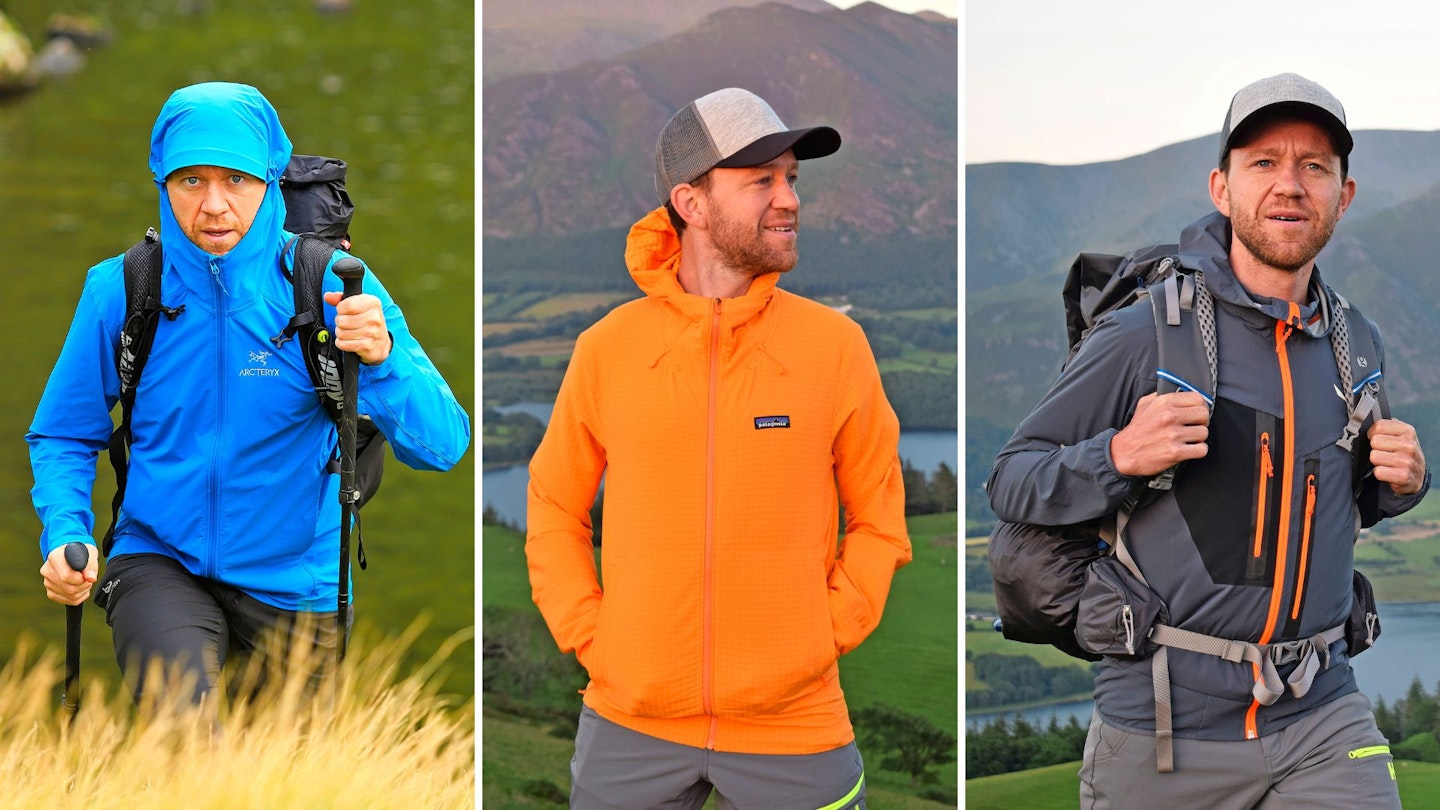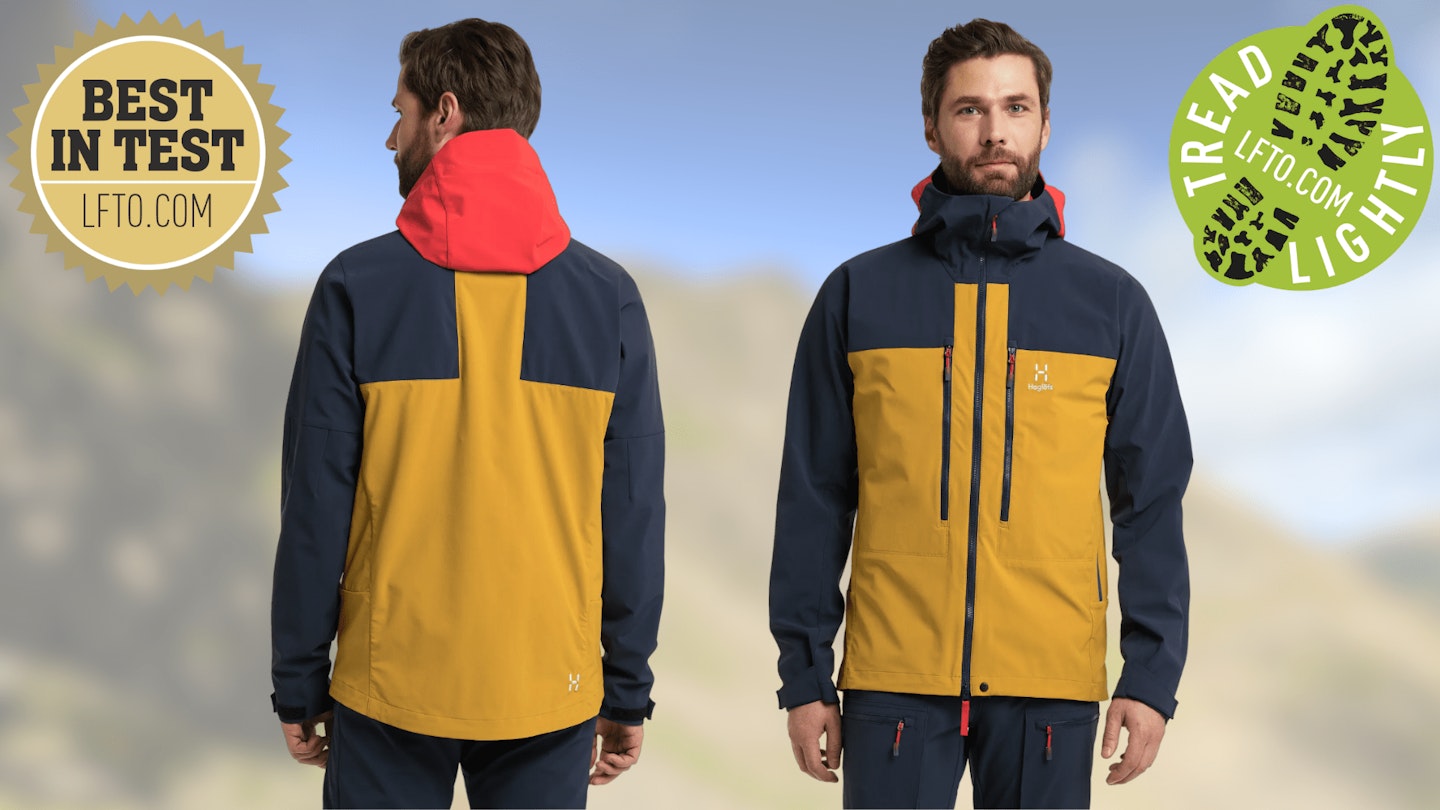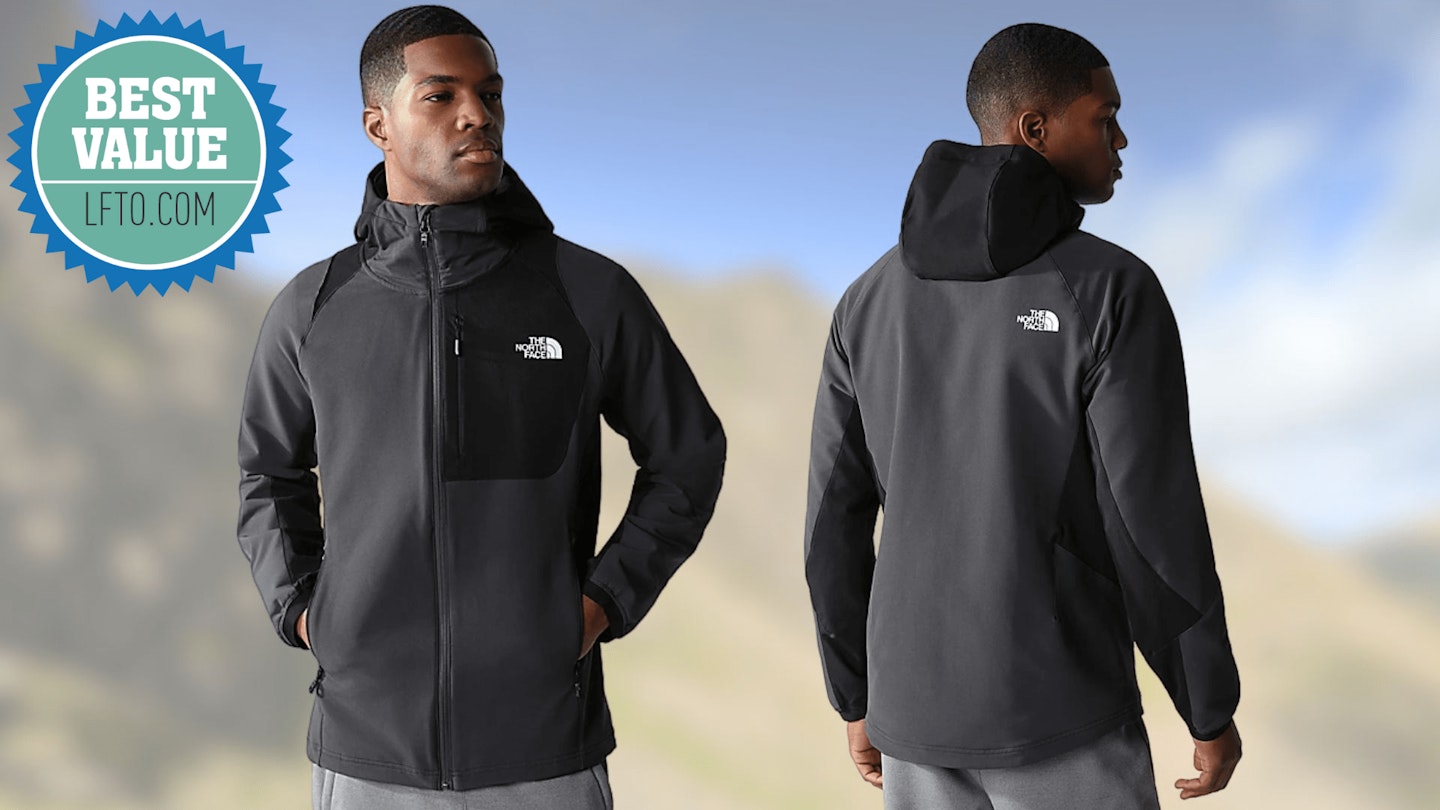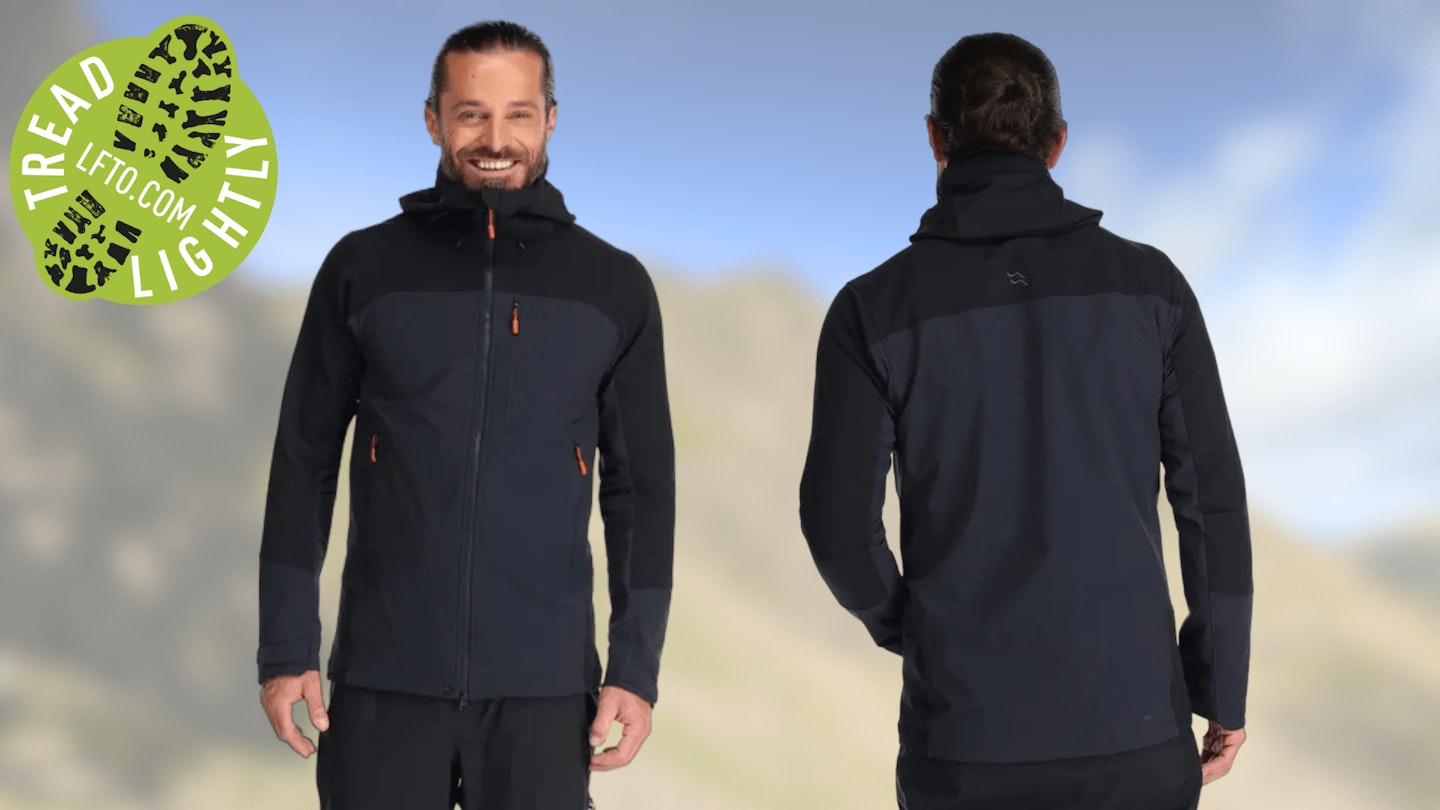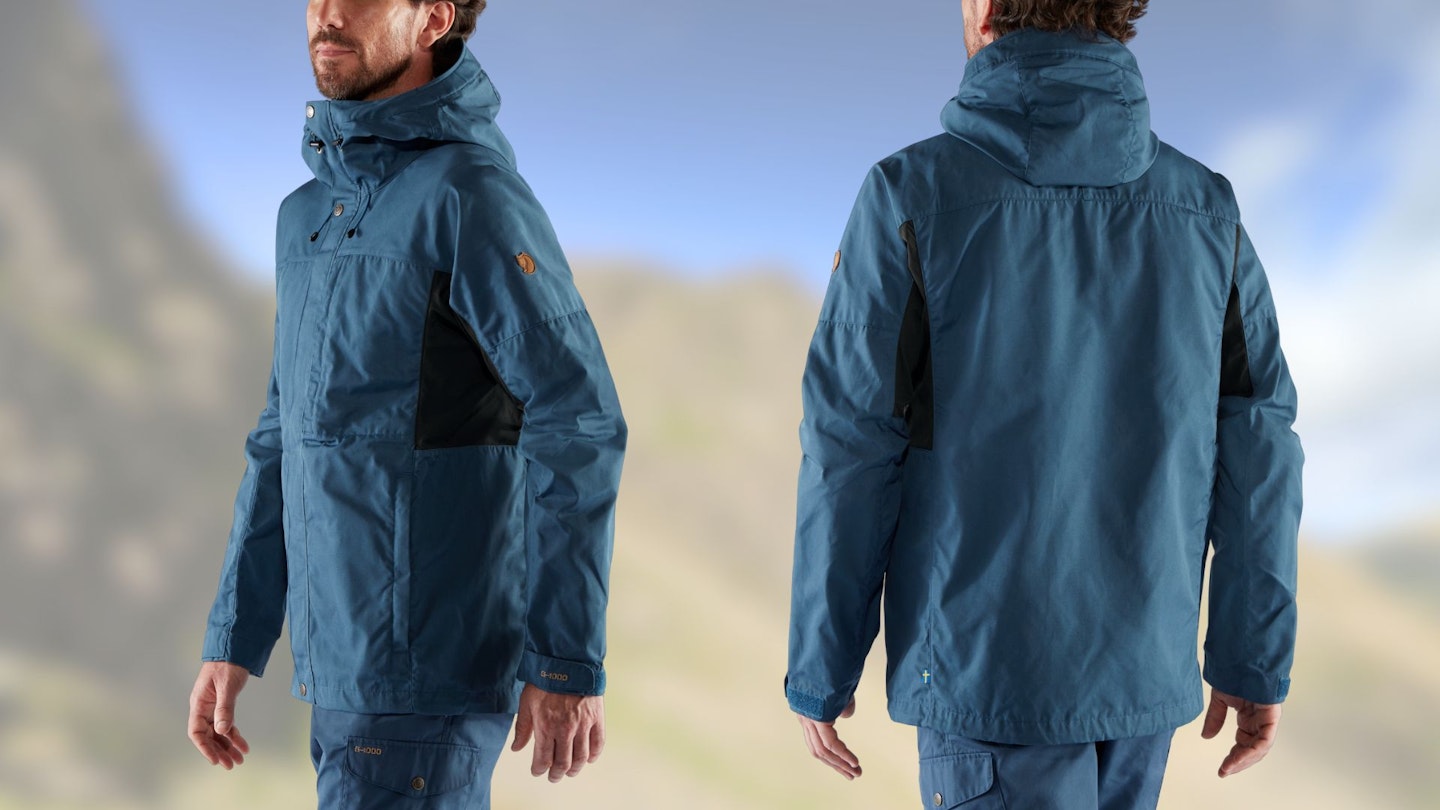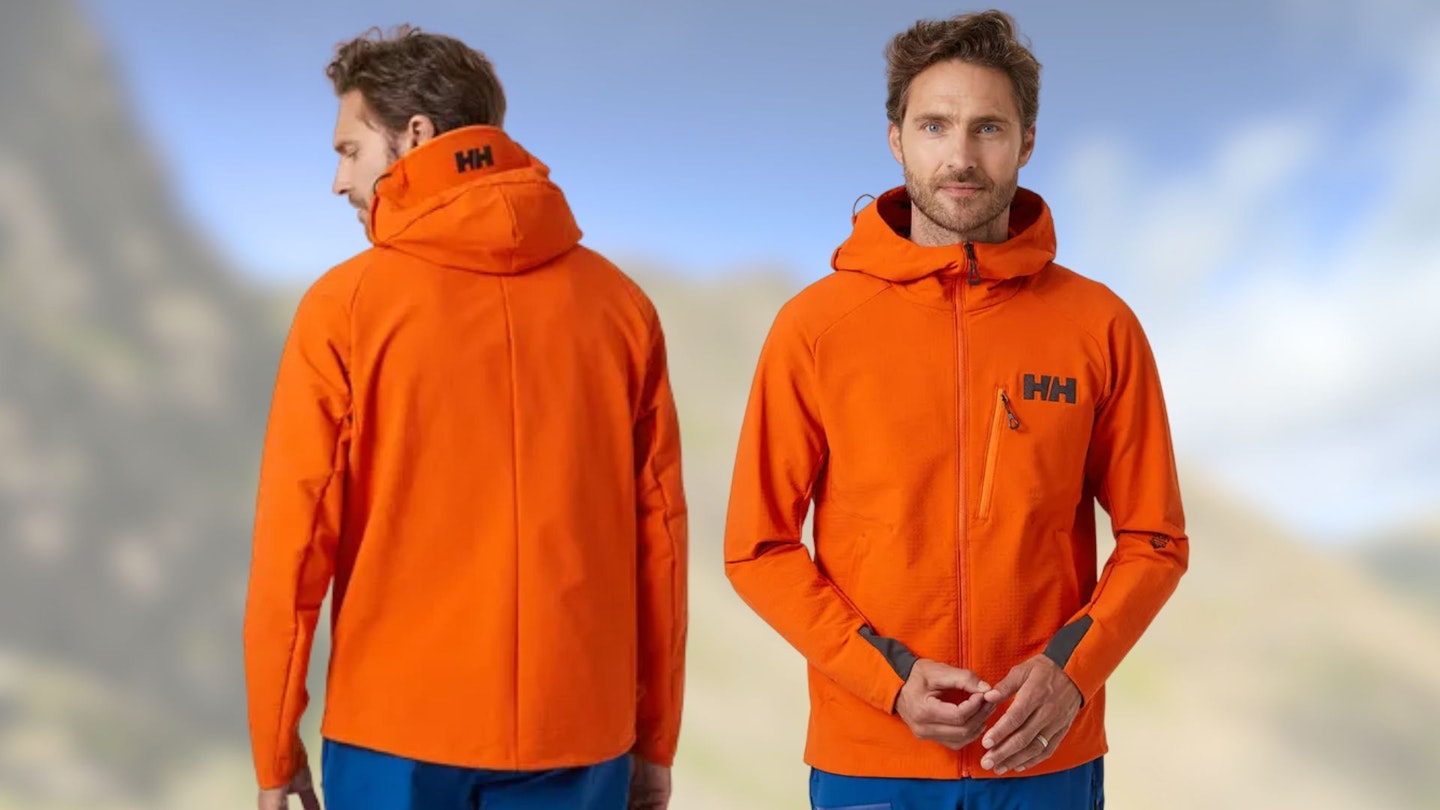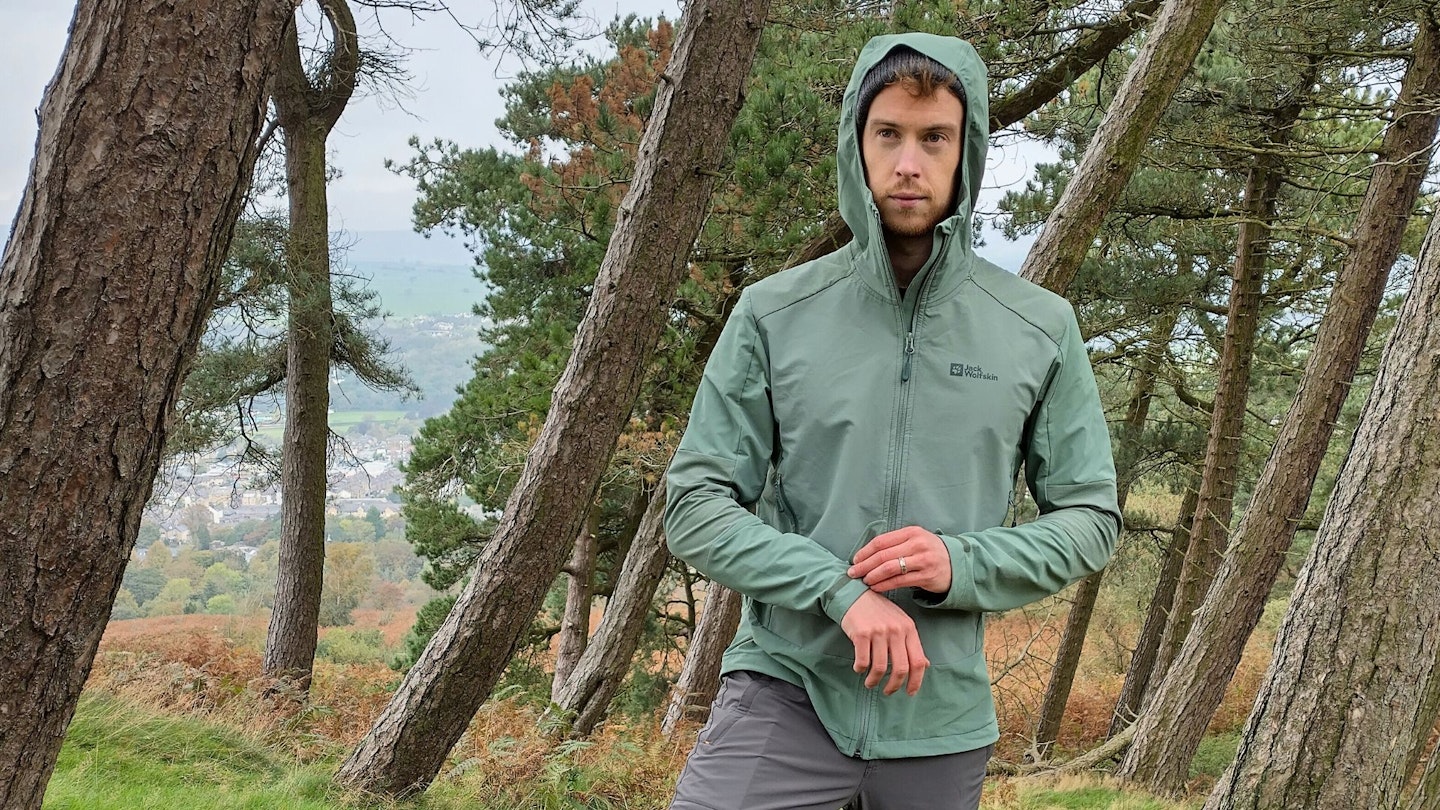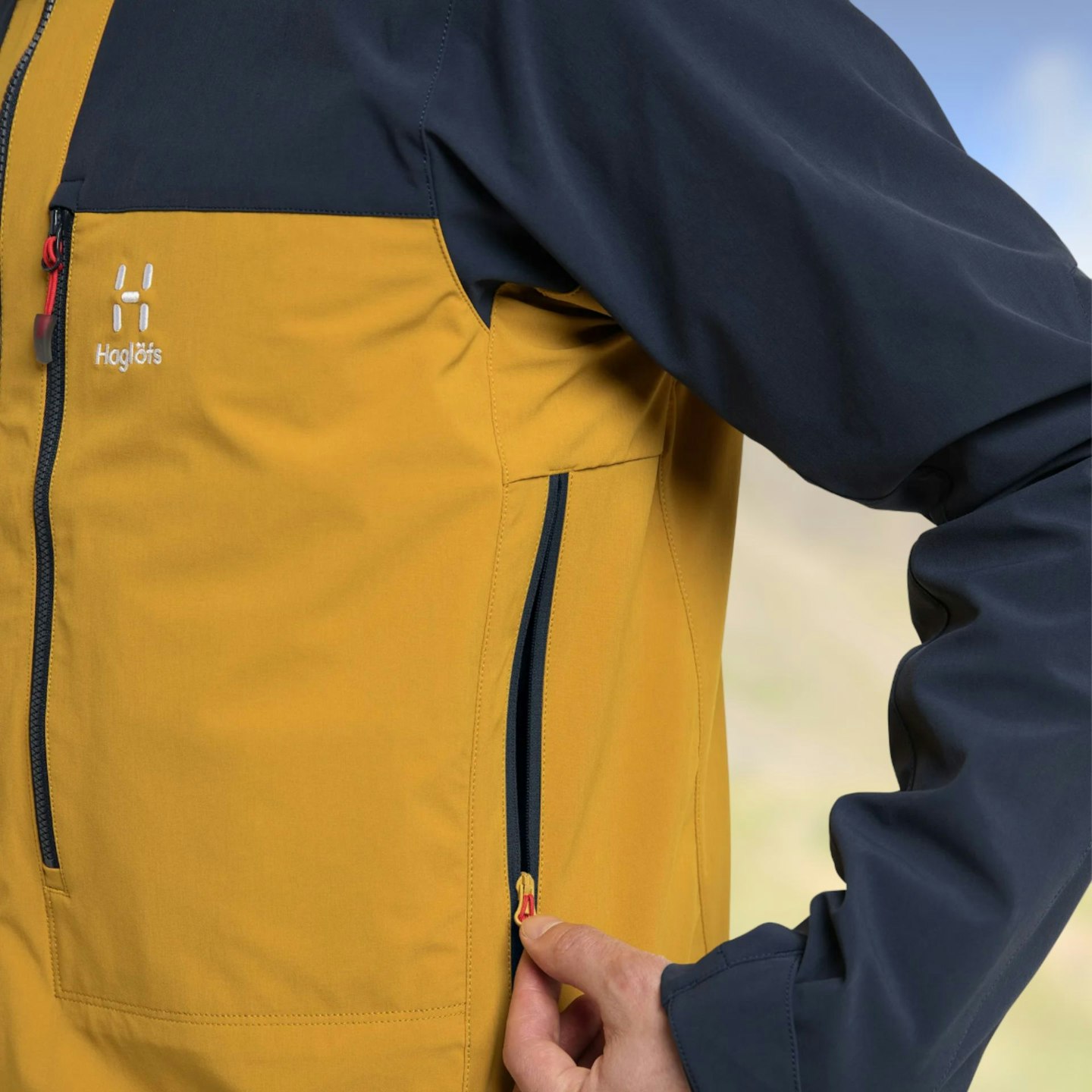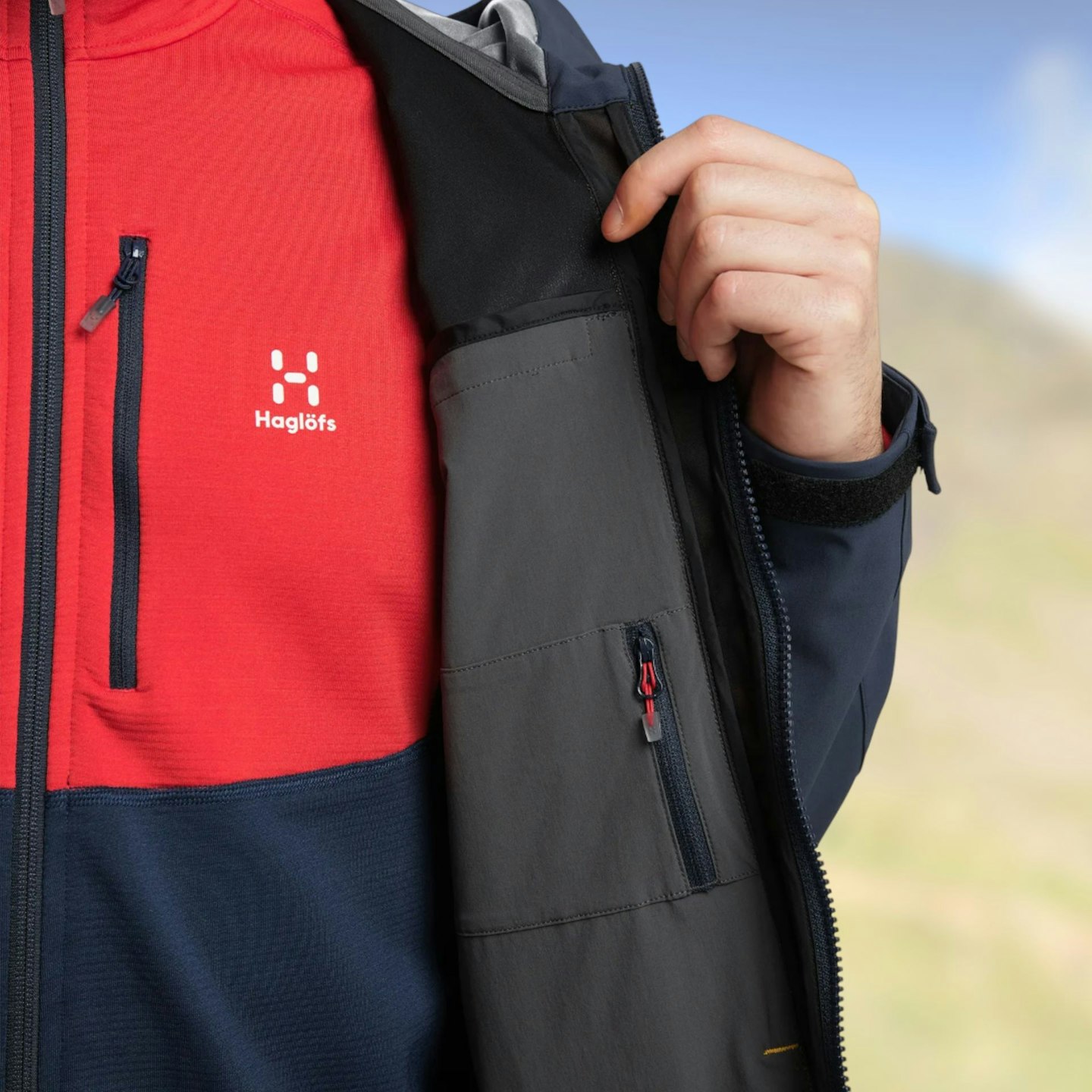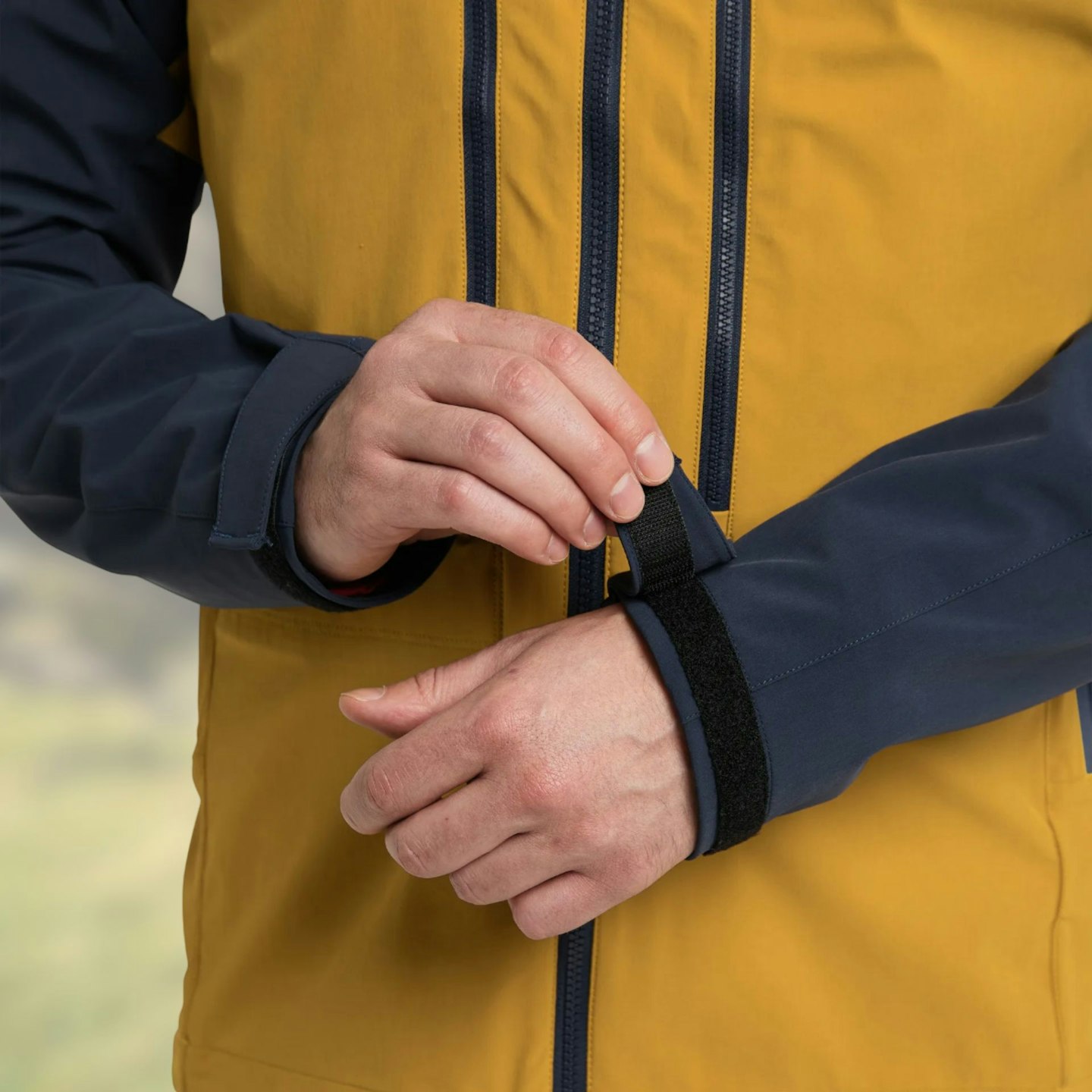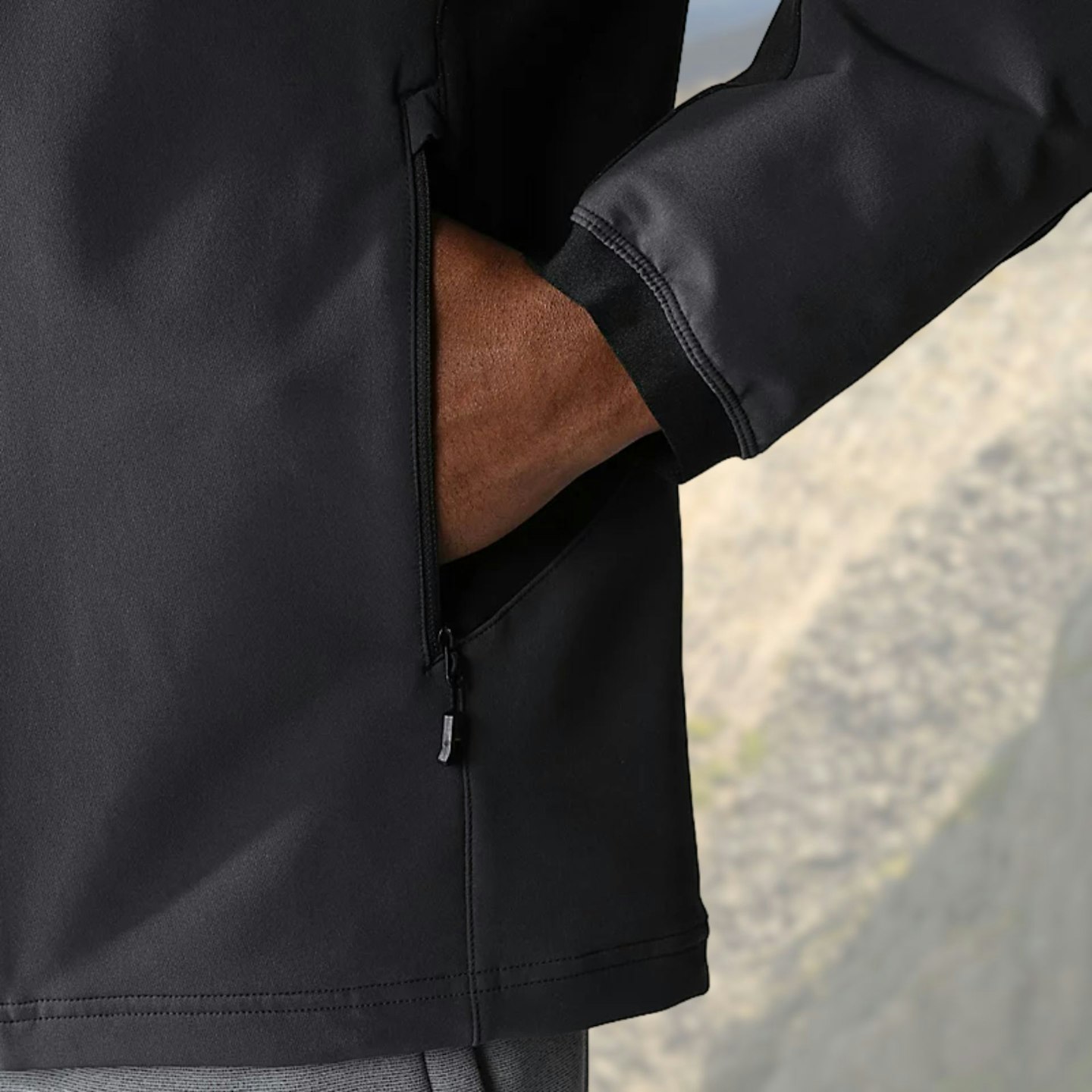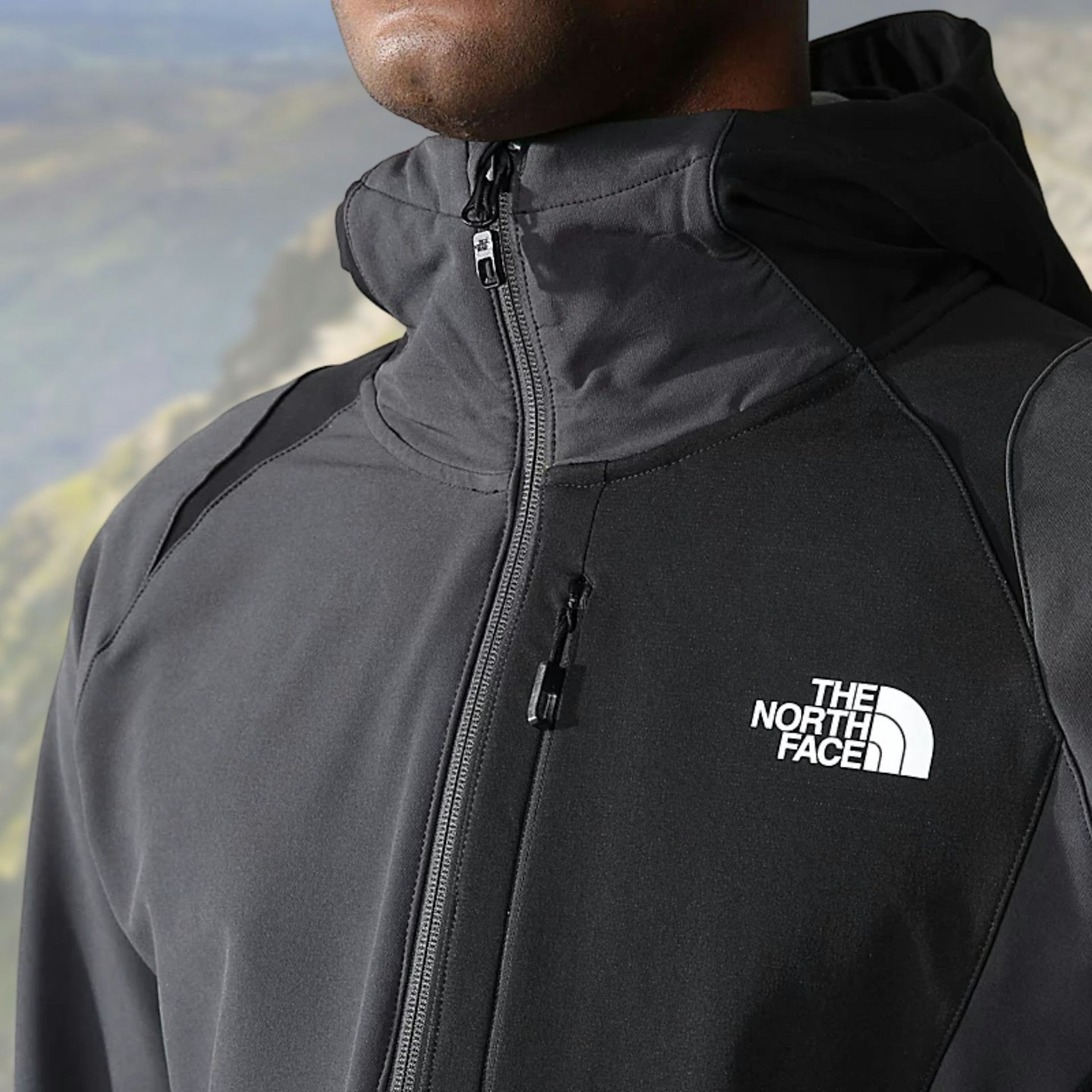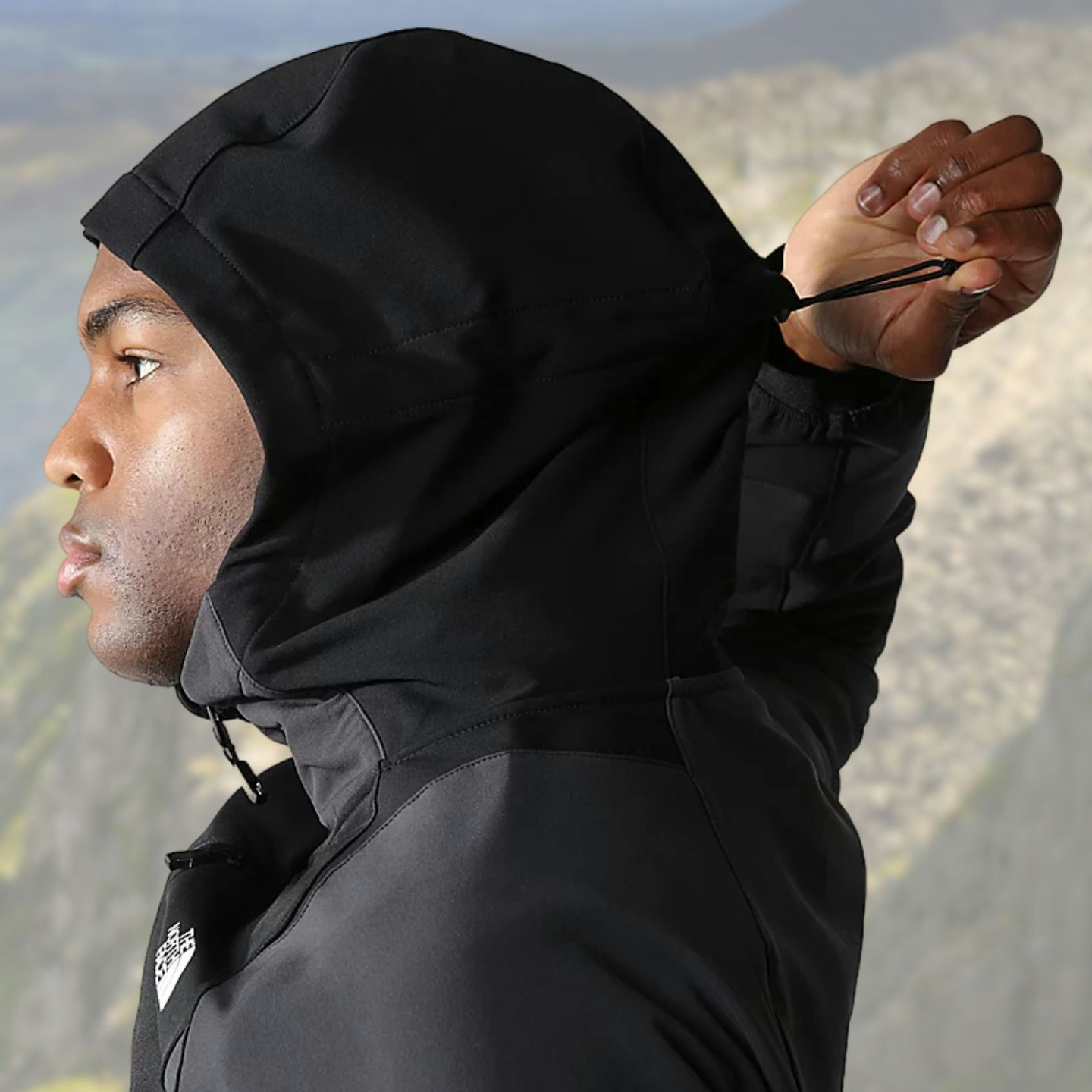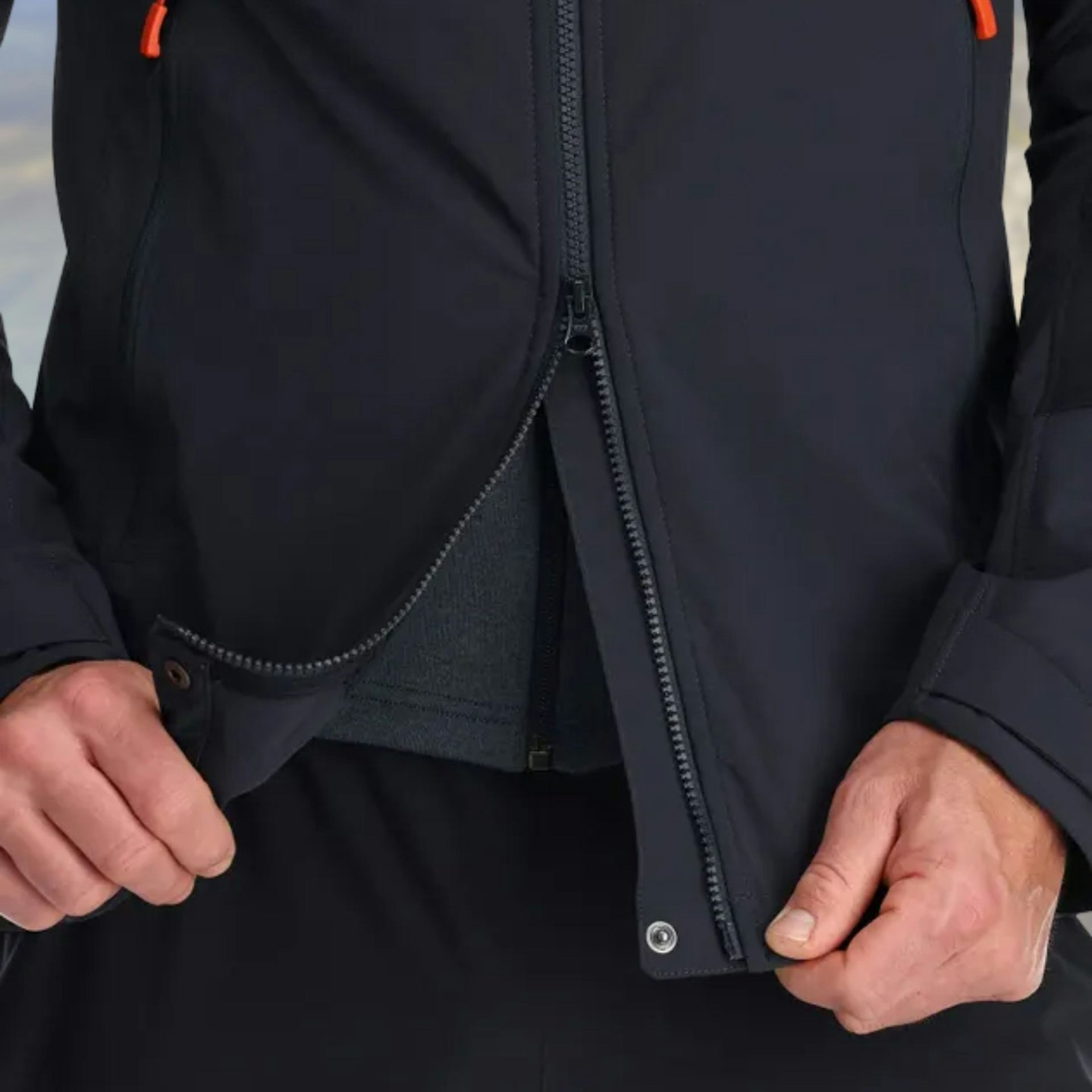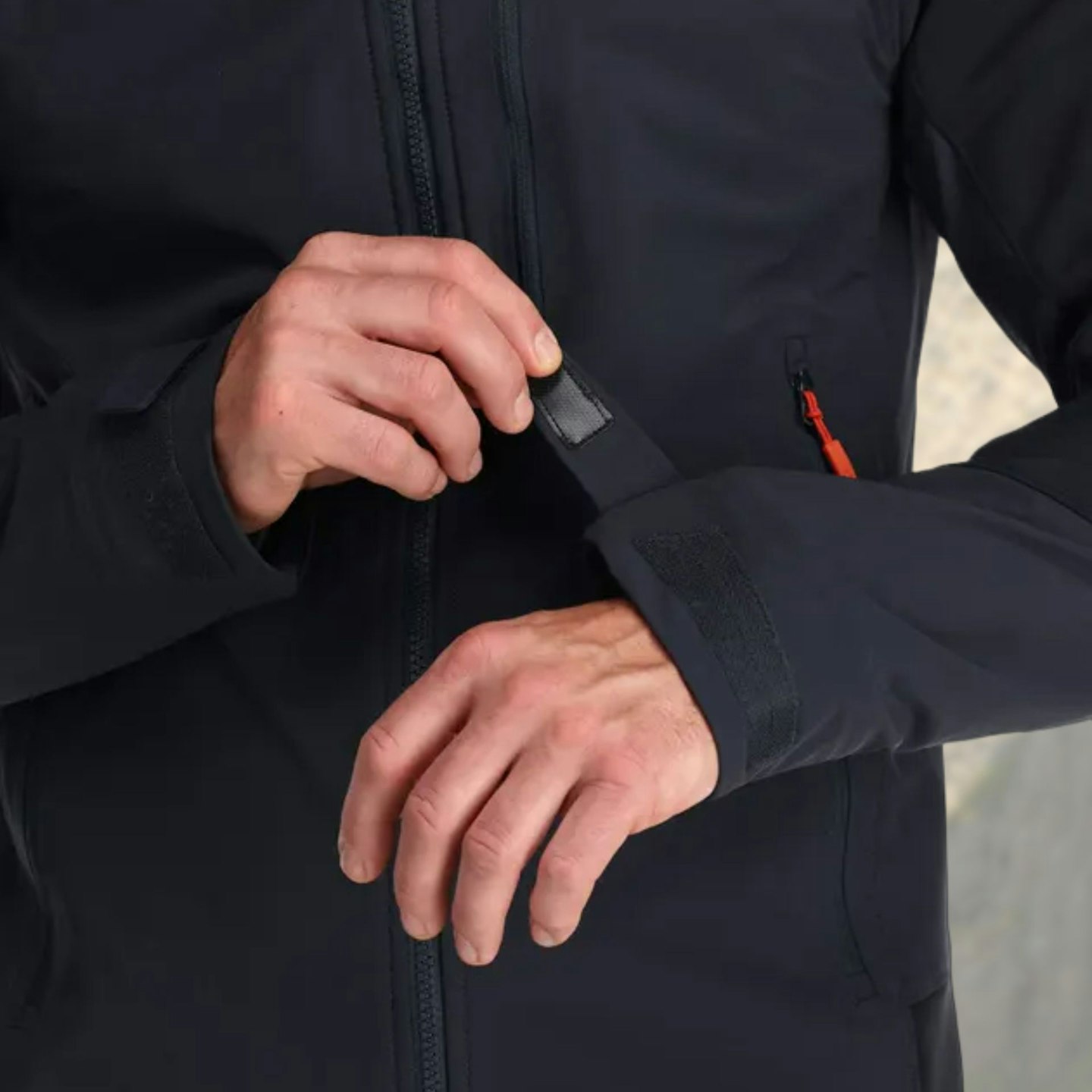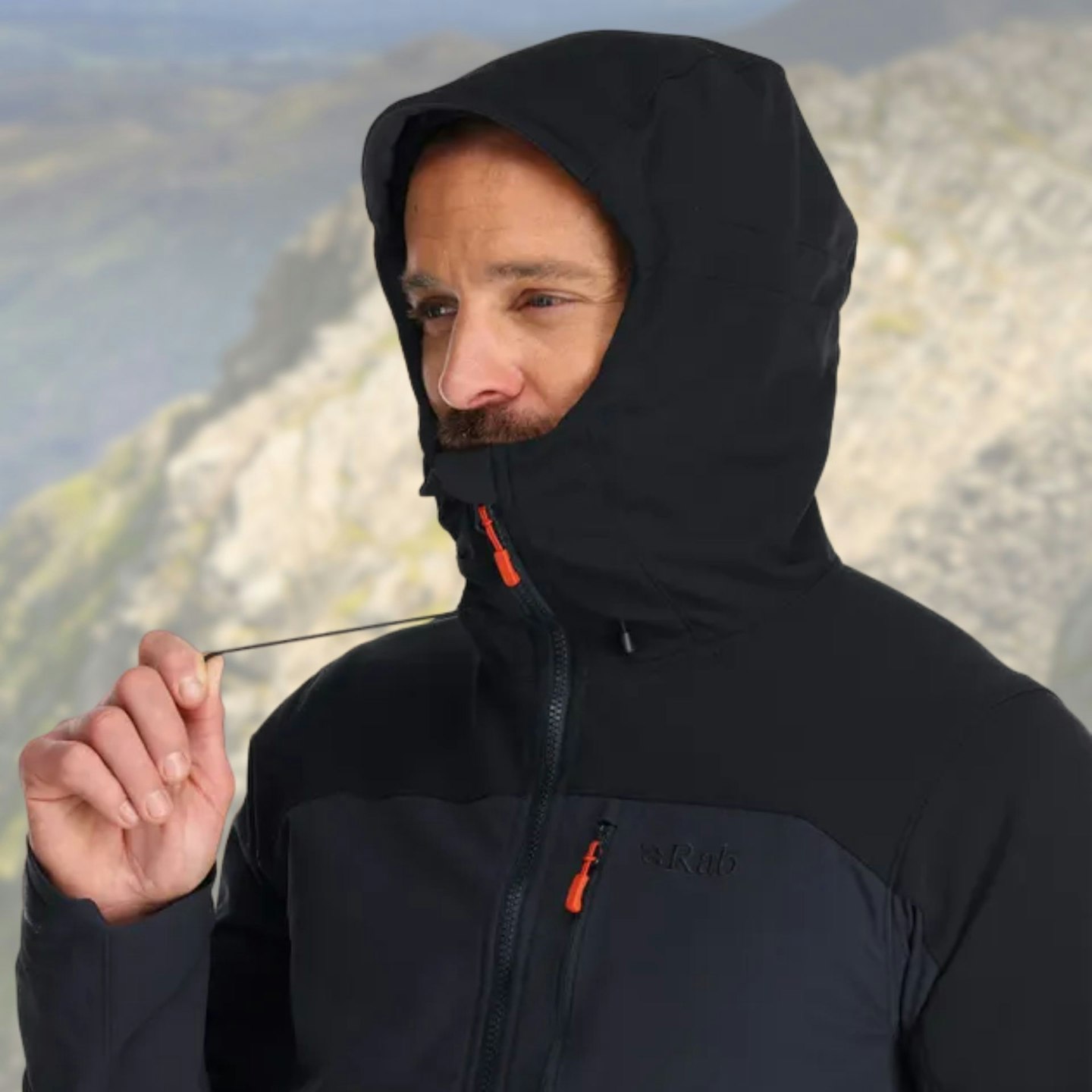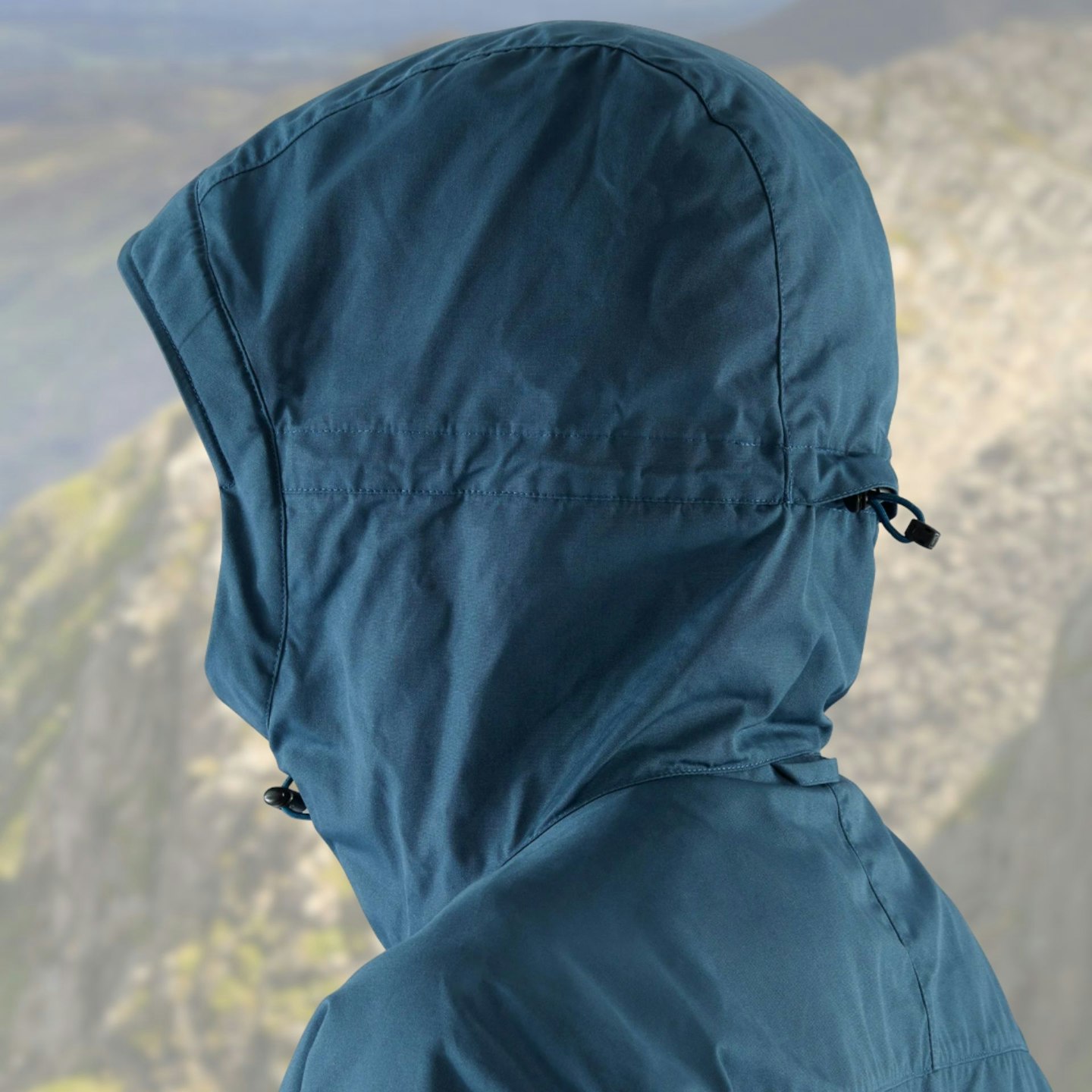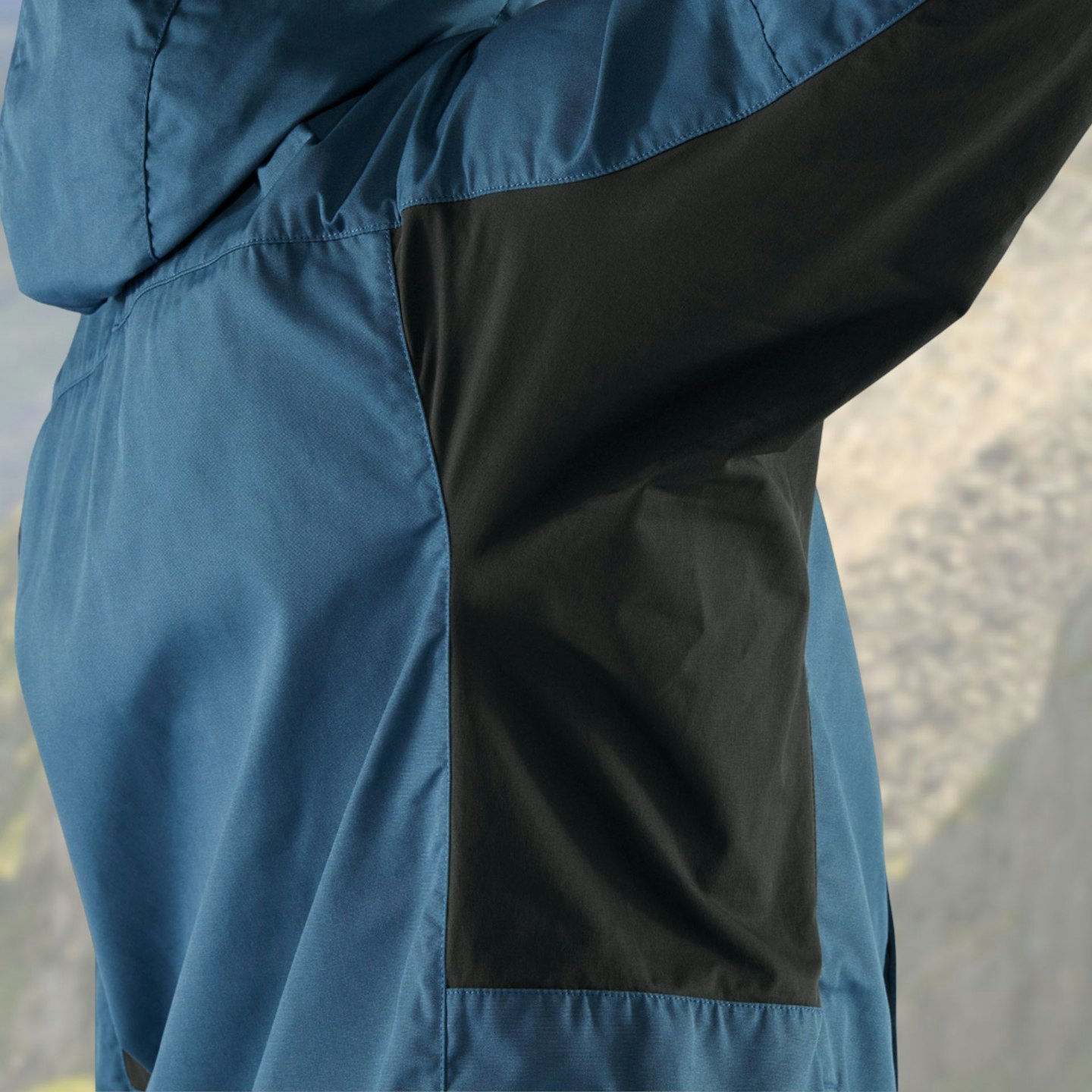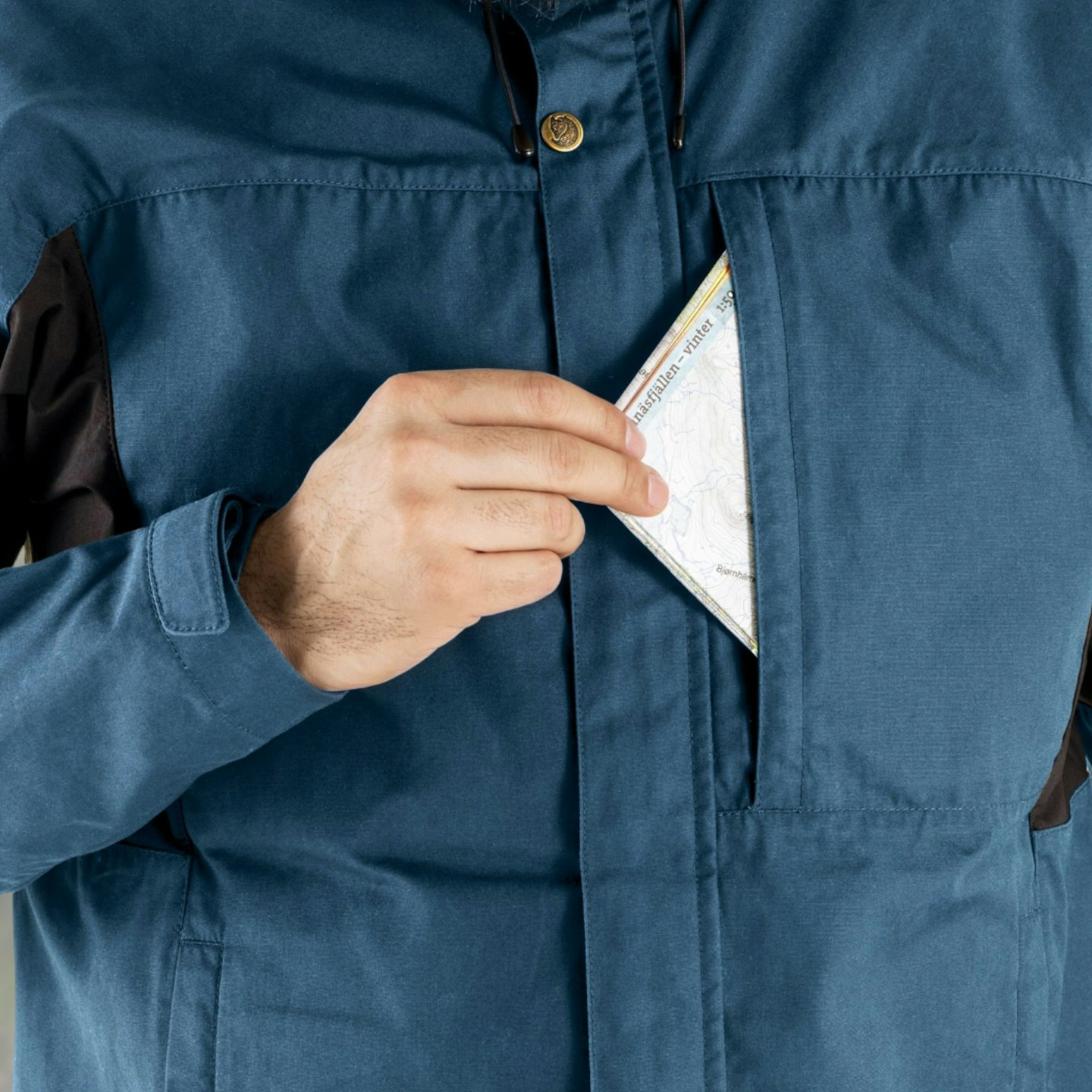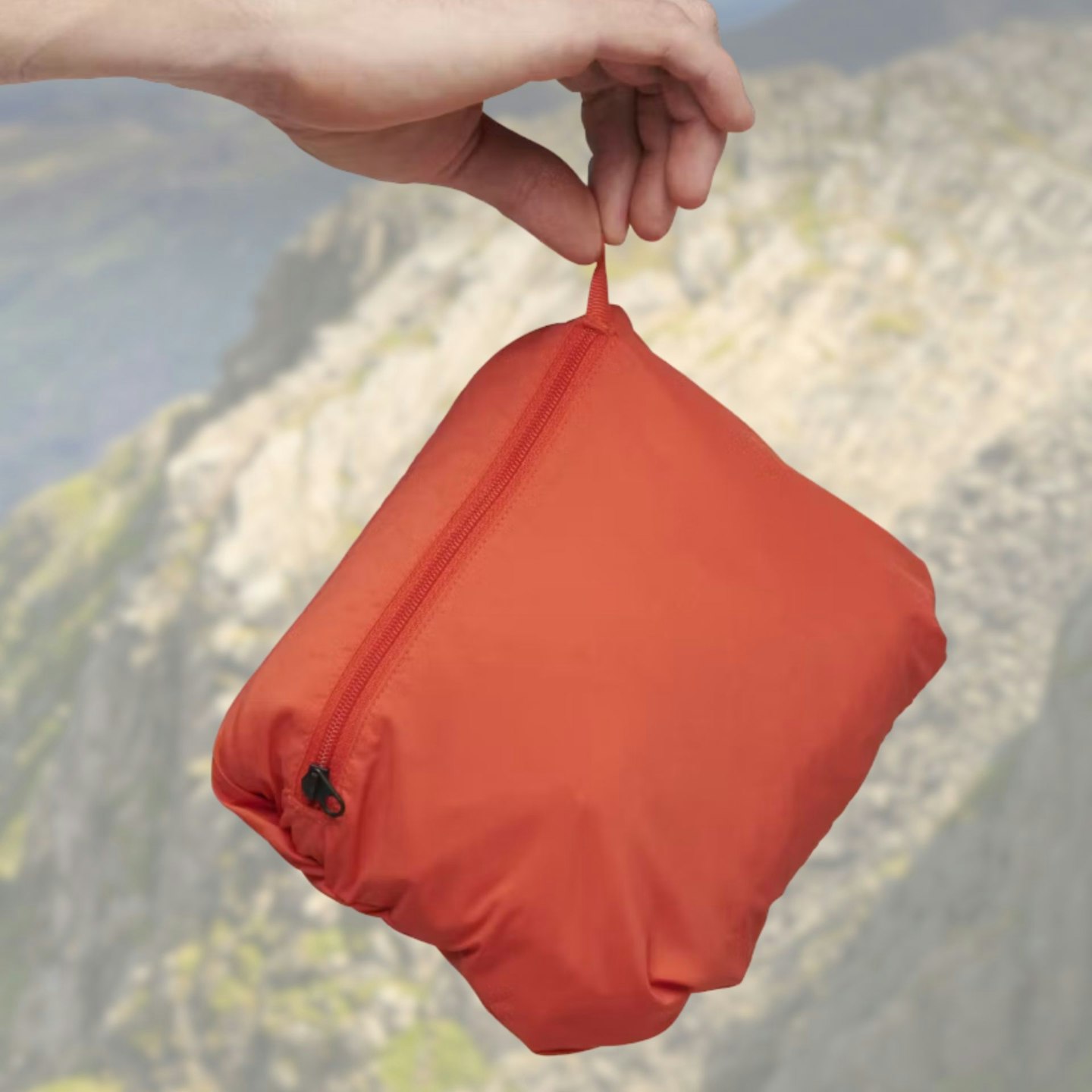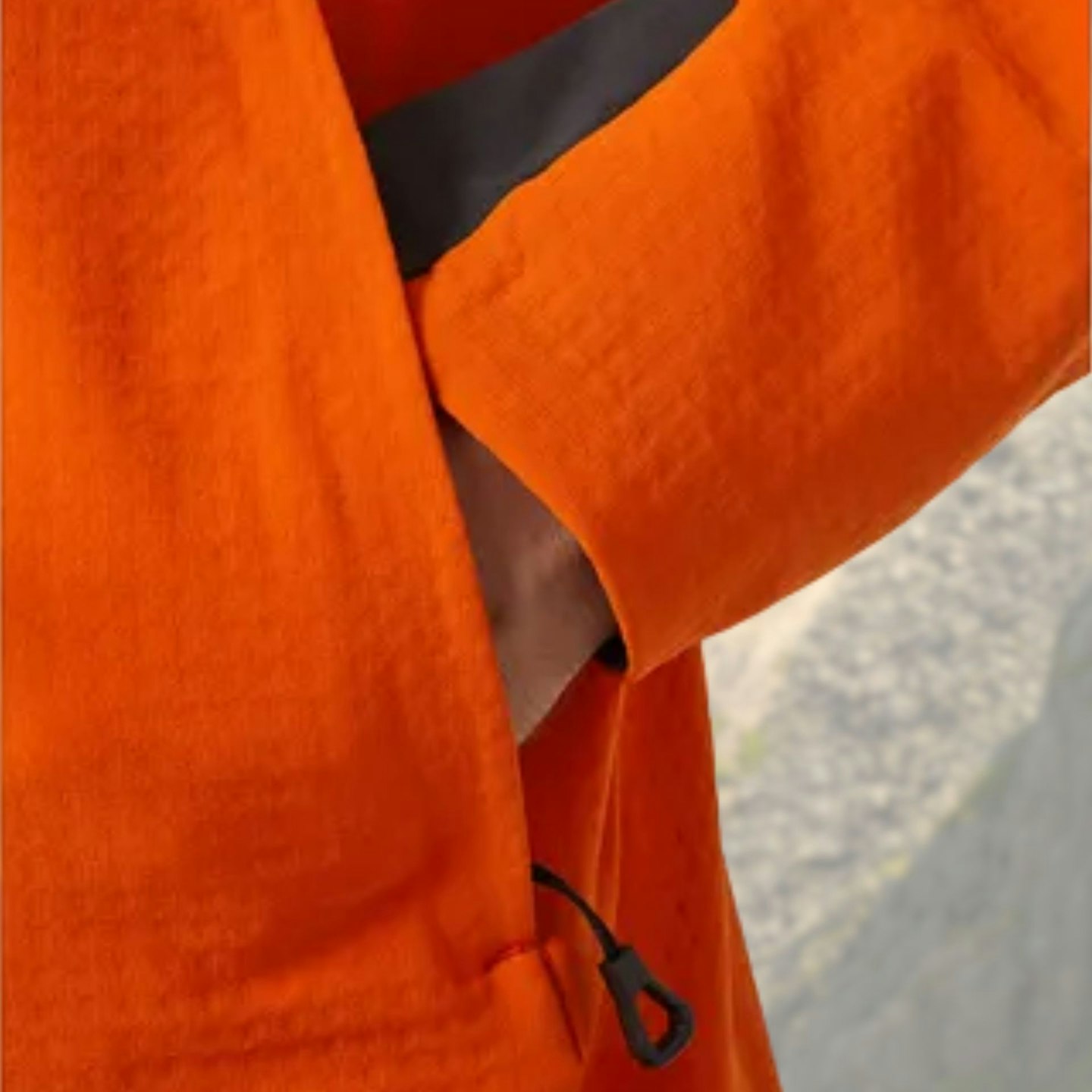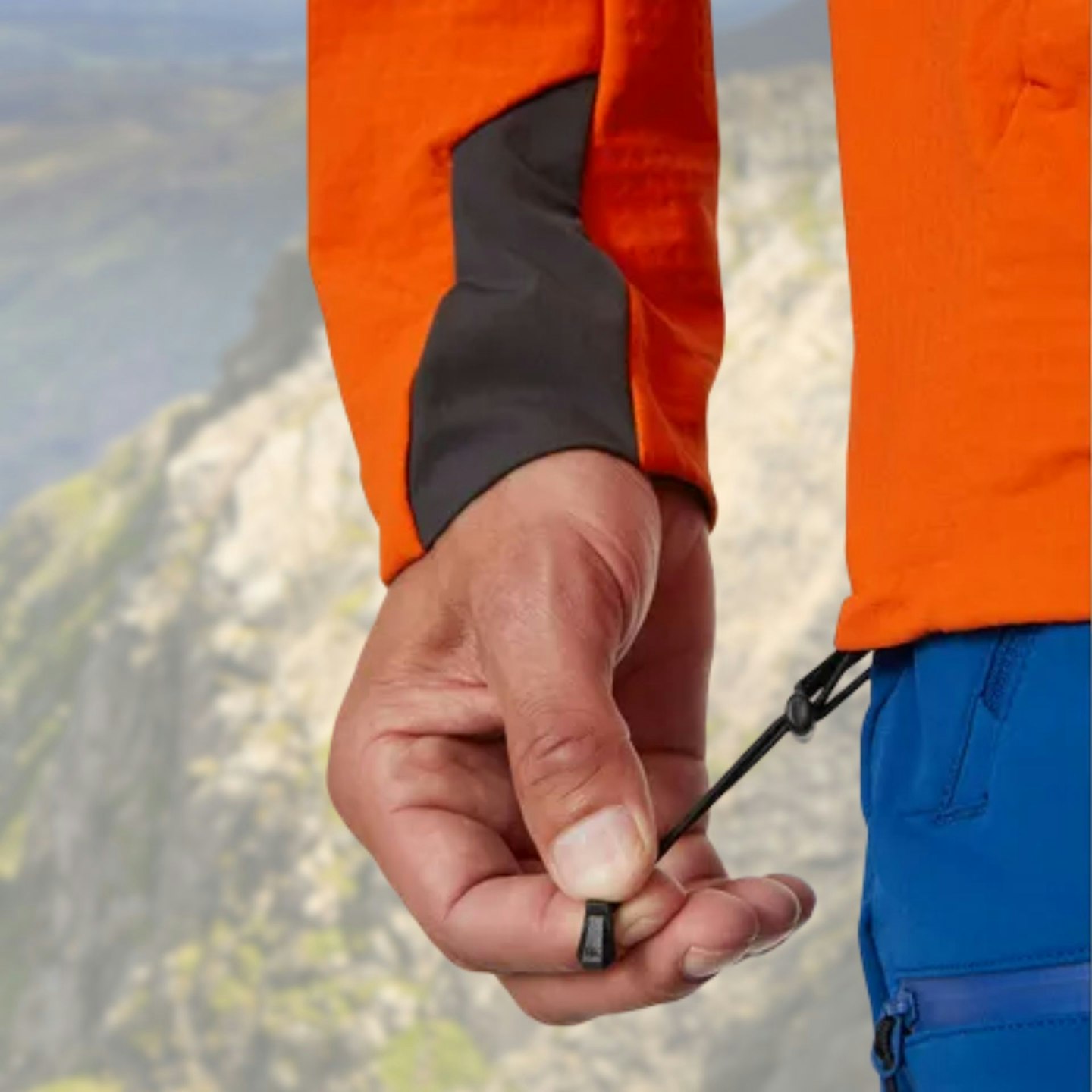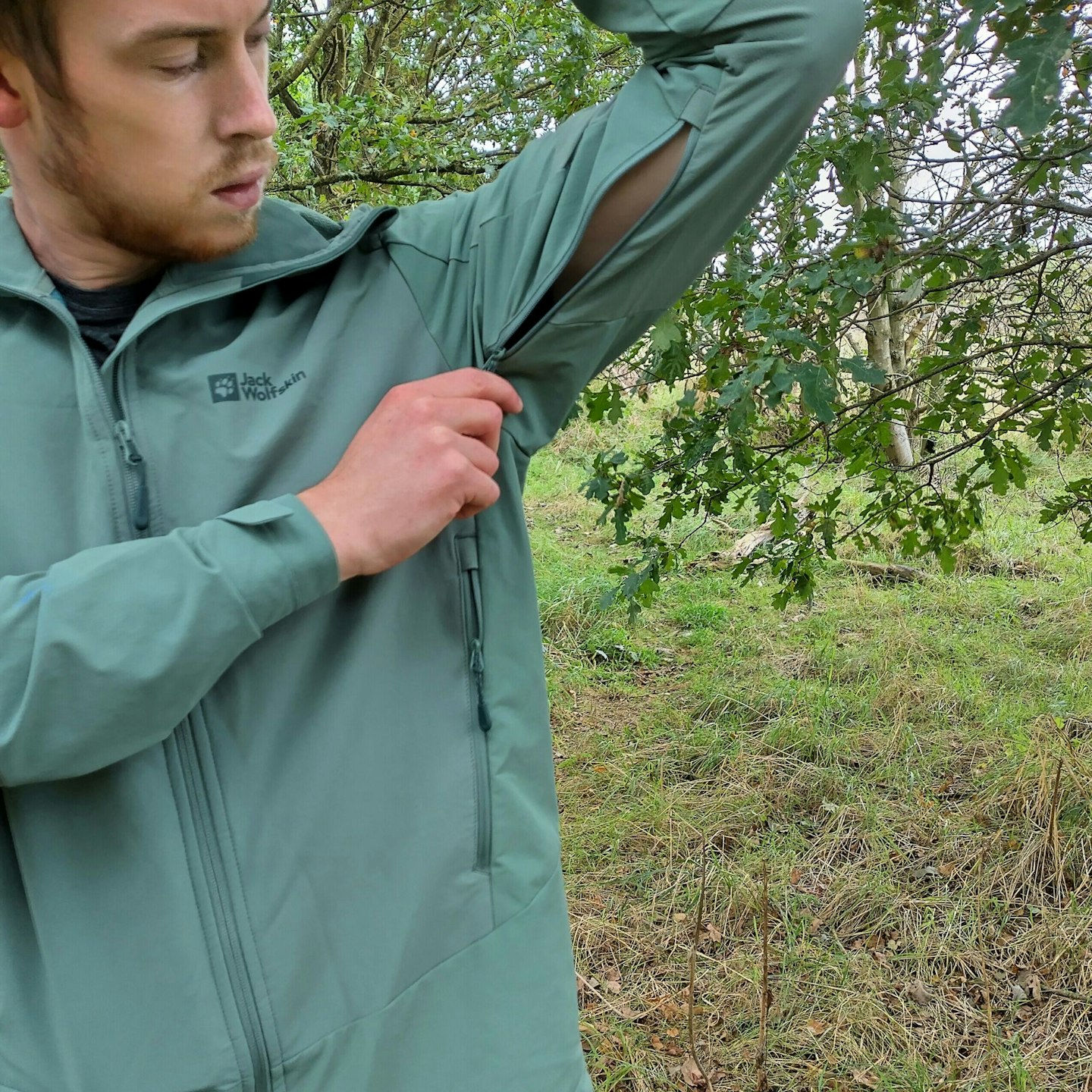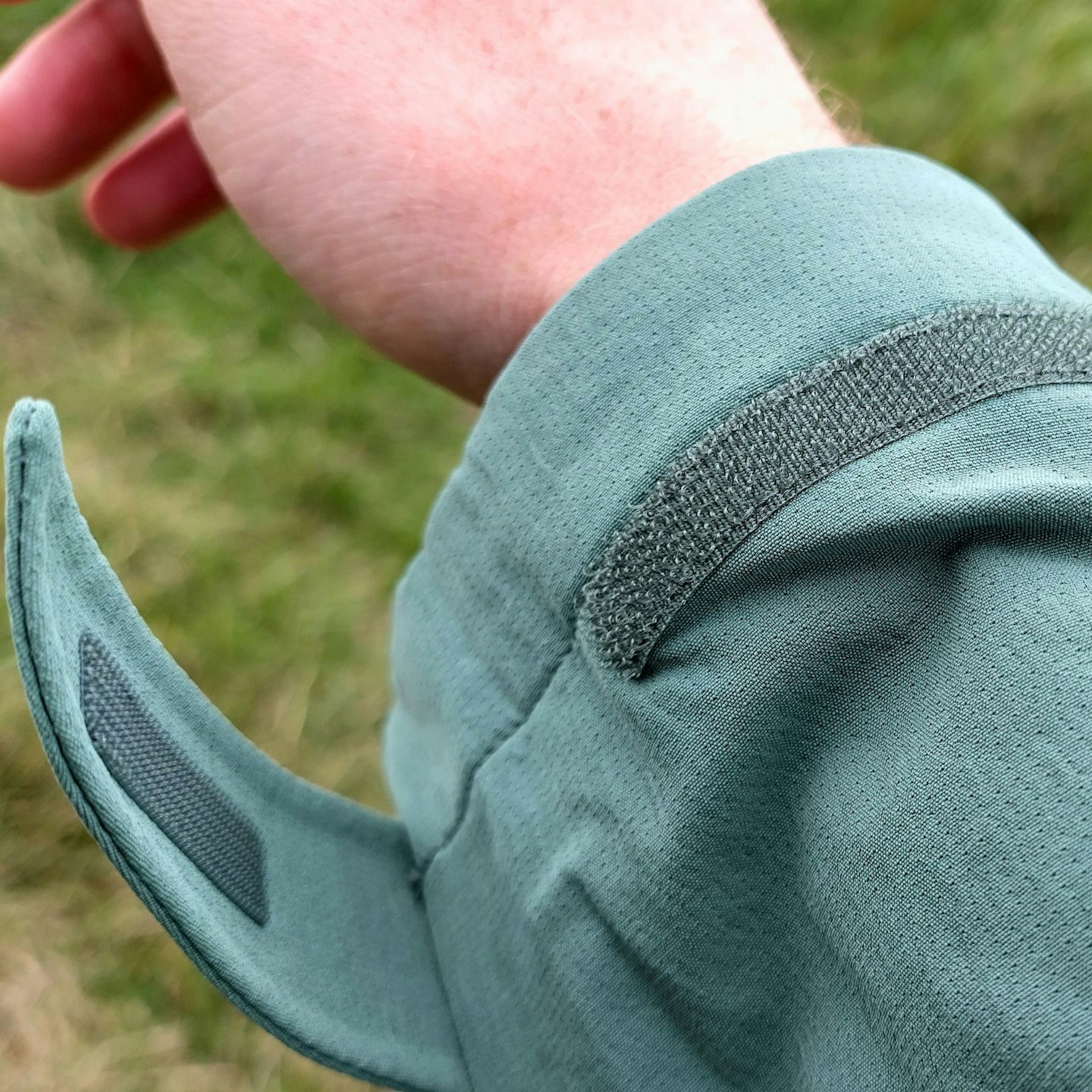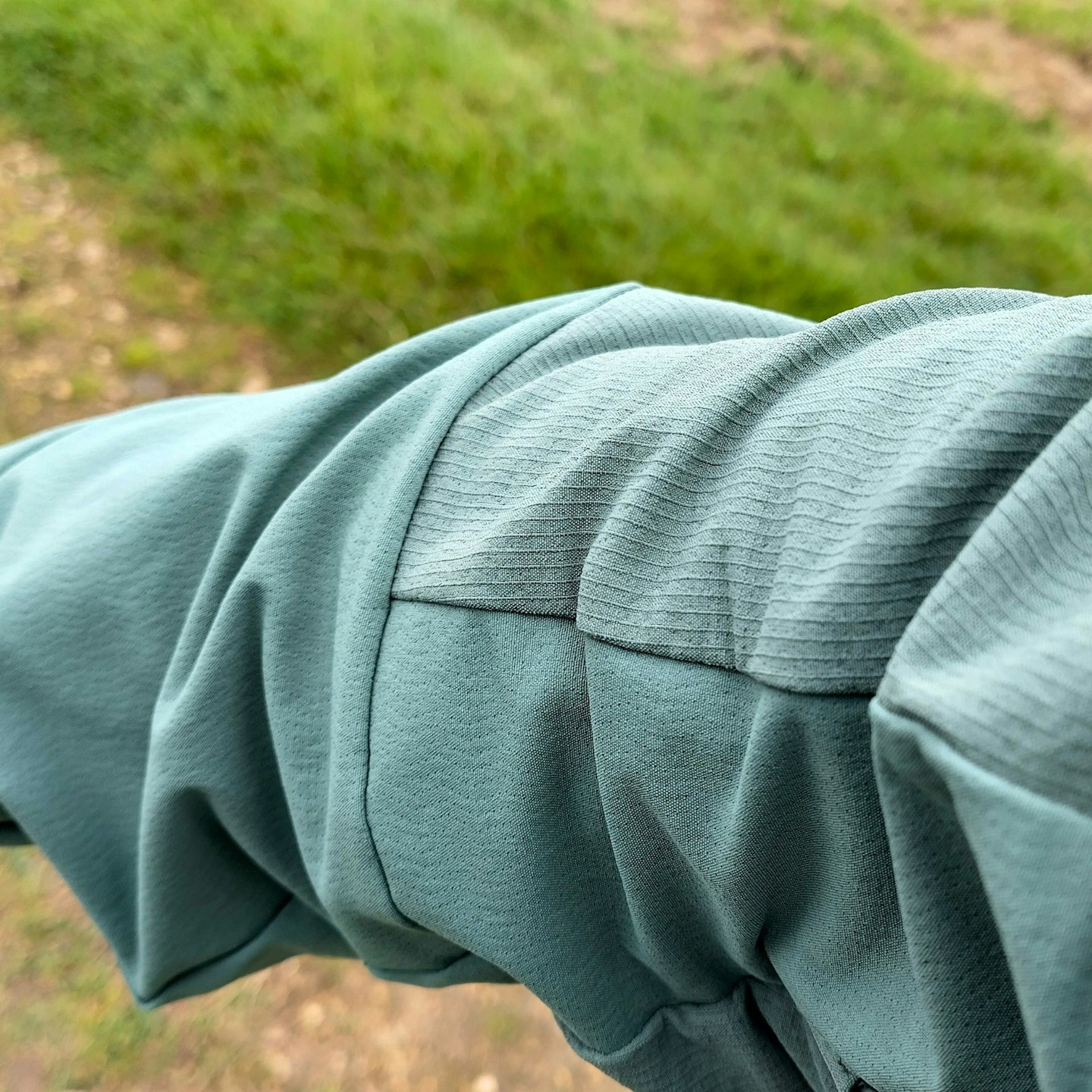What the heck is a softshell hiking jacket? It’s a rather elusive, nebulous clothing concept. You only have to visit the softshell section of brands’ websites for a taste of this uncertainty and disorder. Often everything from fleecy windproofs to miscellaneous mid layers are listed under this catch-all category. It’s a mess, in all honesty. Let’s see if we can unpick it.
While a hardshell jacket is stiff, strong and not that breathable, a softshell is the opposite. It’s softer, smoother, comfier, more stretchy and much better ventilated. But a softshell jacket is more wind- and water-resistant than a fleece jacket. Although it's unsuitable for severe weather, a softshell can protect against light showers and also become an insulating layer underneath a hardshell.
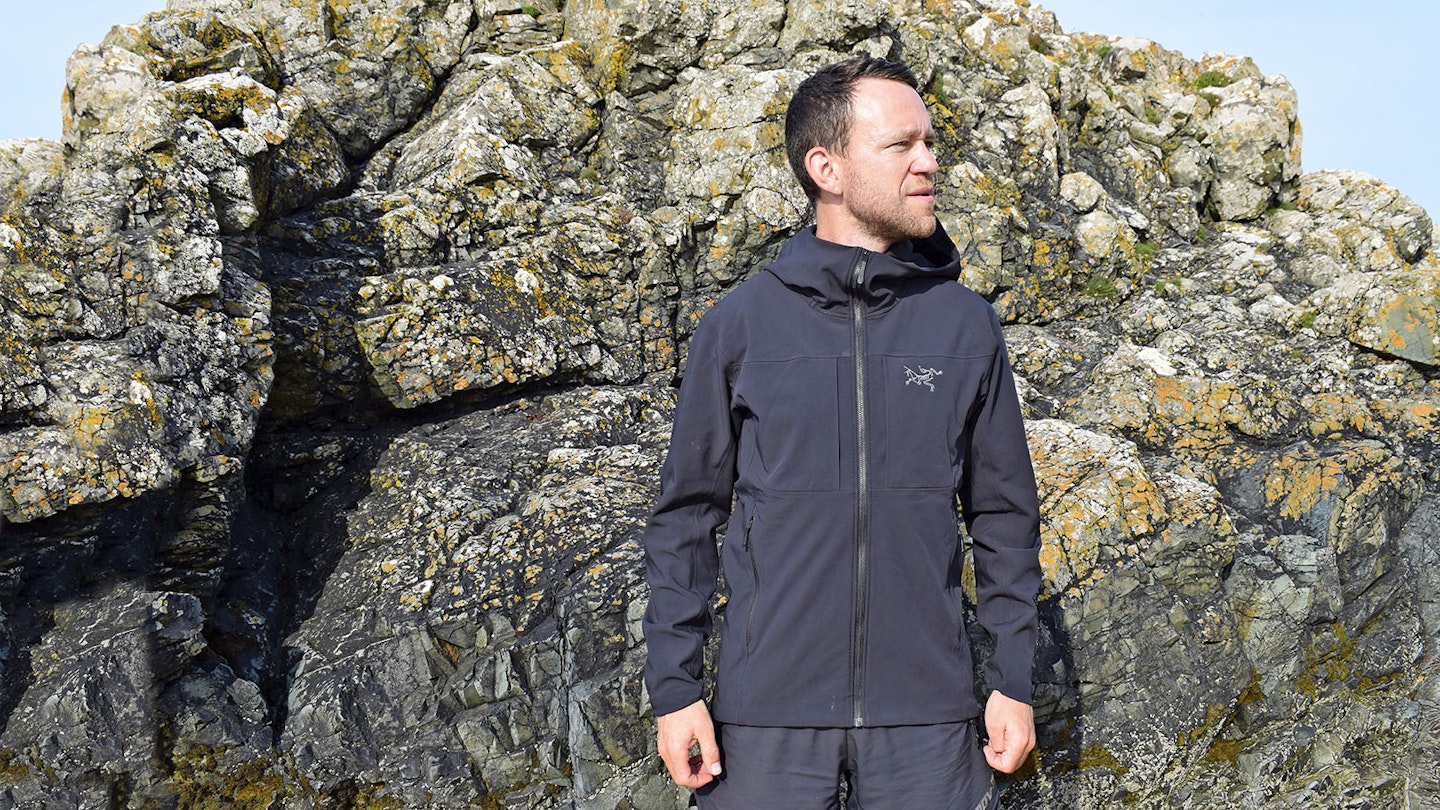
What are the best softshell jackets of 2024?
Best in Test: Haglöfs Roc Sight Softshell - View on Haglöfs
Best Value: The North Face Athletic Outdoor Softshell Hoodie - View on The North Face
Best for durability: Fjällräven Kaipak Jacket - View on Fjällräven
Given the enormous variety of eligible contenders, we've narrowed things down. Here, we’ve chosen to focus on higher-grade, heftier, hooded jackets that work well as standalone outer layers.
Best softshell jackets reviewed:
Description
This is a superb technical softshell for more challenging hillwalking, scrambling and mountaineering routes in mixed weather. It feels sturdy and protective, with a full coverage fit that offers generous length in the arms and body, without being baggy.
A hem drawcord and fully adjustable Velcro cuff tabs stop gusts creeping up your back or sleeves, while the hood has a good peak and rear volume adjustment to keep it tightly cinched. The two-way main zip has a soft chinguard and a full-length baffle, plus a lower press stud to stop the zip riding up.
The fabric is a two-layer stretch softshell that offers great freedom of movement, but also good abrasion resistance and excellent weatherproofing. It fends off cold winds, moderate rain and general dreich very well.
As a thicker and heavier jacket, it can get a bit warm when working hard, but big zipped vents on either side of the torso allow you to dump heat quickly. The big Napoleon-style chest pockets are also ideal for easy access if you’re wearing a climbing harness or a rucksack hip belt – though some might prefer hand pockets. There’s a zippered inner pocket too.
Pros
- Protective
- Sturdy
- Flexible
- Well cut
- Great features
- Sustainable
Cons
- Overkill for casual hikers
Description
When it comes to the trendier outdoor brands, it sometimes feels like you’re paying a premium for the logo. But not in this case – this softshell hoodie from The North Face seems fairly priced and pretty good value, especially since it’s heavily discounted right now if you shop around. It’s an excellent all-rounder too, using the brand’s stretchy, wind- and water-resistant WindWall fabric. It’s polyester-based rather than nylon, but in a reassuringly hefty weight that still feels sturdy. On the hill it worked well, balancing warmth, protection and breathability.
Admittedly, features are somewhat limited – cuffs are stretch-bound but not adjustable, so they are a little loose around the wrists, and the hem has an extended drop tail but no drawcord adjustment. The hood has rear volume adjustment to cinch it in tightly, but the peak is a little floppy. However, you get three decent zipped pockets (though only two on the women’s version) and a full-length main zip with an internal stormflap and a soft chinguard.
The fit for men is excellent, with a contemporary cut that is trim yet comfy, with good freedom of movement. The women’s version is strangely short and boxy though, so ladies might want to try before you buy.
Pros
- Sturdy
- Flexible
- Comfortable
- PFC-free DWR
Cons
- Basic features
- Not the lightest
3.
Rab Scimitar
Description
The Scimitar softshell has been part of Rab’s range for over a decade. It’s easy to see why – the durable, no-nonsense design is very rugged and robust, delivering great warmth and protection with plenty of flex too. It’s far less clammy than a hard shell, particularly for all-day wear. An array of practical features makes it well suited to cold, blustery mountain days. The fit is classic Rab, built for rangy climbers. What’s not to like?
Well, it’s too hot and heavy for milder conditions. And if you do get caught in a downpour, the heavier fabric panels take a long time to dry. That’s probably why the brand has now put out a Gore-Tex Infinium Windstopper version of the Scimitar. It costs more and gives you even better weather protection thanks to its membrane (though it’s still not classed as fully waterproof, as it lacks taped seams).
But this comes at the cost of breathability and comfort, which is sort of why you’d opt for a softshell in the first place. For that reason, we still prefer the tried and tested original – just check the forecast before you decide on the day’s layers.
Pros
- Comfortable
- Flexible
- Rugged
- Great features
- PFC-free
Cons
- Comparatively heavy
- Slow to dry
- No women’s version
Description
Fjällräven doesn’t really do softshells like other brands. The Kaipak is technically a softshell jacket in the sense that it doesn’t feature a waterproof membrane or taped seams. But this is a heavy, tough trekking jacket largely made from the brand’s sturdy G-1000 polycotton blend, though with stretchy underarm panels for a little added flexibility. The main fabric can be treated with Greenland Wax for added water-resistance too.
It is generously equipped with a fully adjustable, stiffened hood, inner and outer chest pockets plus two hand pockets. You also get adjustable cuffs, a hem drawcord and a chunky main zip with inner and outer stormflaps, the latter of which is fitted with triple press studs. Talk about belt and braces protection.
The fit allows plenty of room for layering, while articulation is surprisingly good. As a package, it oozes quality and feels reassuringly well built. It’s overkill for milder weather, but for blustery and drizzly days the Kaipak is a solid jacket. It looks stylish enough to use as an everyday coat too. And although it’s a bit of a throwback, relying on a fabric that’s been around since 1968, if it works (and it does), then why not?
Pros
- Tough
- Well-built
- Great features
- PFC-free
Cons
- Heavy
Description
Our Outdoor Gear Editor Ben Weeks has long been on the hunt for the perfect lightweight softshell – the kind of jacket that’s light enough to be tucked into a pack unnoticed, but protective enough to keep out the wind and a bit of weather.
A few have come close to being perfect, but now he's found the one: Black Diamond's Alpine Start Hoody. It weighs just over 200g, which is less than half the weight (or even a third in some cases) than our other recommendations here, and packs down into its own pocket.
It has an adjustable hood and sleeves which have enough stretch in the cuff to be pulled up for venting. Ben found the Schoeller stretch-woven fabric is super breathable and accommodating but keeps the breeze out effectively and shrugs off a bit of drizzle and even some snow.
The fit of Alpine Start Hoody feels athletic but is roomy enough for effective layering – adding a fleece or insulated layer underneath makes it cold-weather ready. It’s wonderfully adaptable, and one of Ben's new favourite pieces of outdoor kit.
Pros
- Very lightweight
- Breathable
- Good weather resistance
- Great for layering or wearing alone
Cons
- Not as tough as heavier softshells
Description
This hybrid jacket sits somewhere between a stretch softshell and a fleece, the idea being to combine fleece-like warmth and comfort with the added weather protection of a softshell. Ellie tested the women’s version up here in the mountains of Snowdonia, and found it delivered on both counts.
The fabric is a durable polyester-nylon blend, with elastane for added stretch. It’s finished with a PFC-free durable water repellent finish. As such it is both flexible and comfortable, with a soft gridded inner for warmth and breathability. Meanwhile, the outer face blocks wind well and copes with light precipitation. It feels tougher than a fleece or a lightweight softshell.
The jacket is also well-cut with a dropped tail for a little extra rear protection. It has a typical mid layer-style fit, though is roomier than most in the torso, with long arms and close-fitting cuffs. The jacket has three zipped pockets, a hem drawcord and inner dump pockets. You also get a good hood with a pronounced peak and rear volume adjustment.
All in all, it’s a versatile layer that will work particularly well for walkers who tend to get cold in the hills, delivering similar warmth and breathability to mid-weight fleece but with superior wind and water resistance.
Pros
- Comfortable
- Warm
- Good features
- PFC-free DWR
Cons
- Slightly roomy fit
- Not the lightest
Description
This is a hybrid fleece/softshell jacket that competes squarely with the Helly Hansen Odin Pro Shield, employing a very similar fabric, design and construction. It doesn’t feel quite as hard-wearing as the Helly, and nor does it have as much stretch, but it is slightly lighter (and cheaper). It’s still a robust jacket for mountain use.
You get a large hood with three-point adjustment and an excellent wired peak, which protects the face and deflects the wind. There’s a Velcro tab to roll away the hood and the main zip is backed with a stormflap. The men’s version has four external pockets plus zipped torso vents, though the lower hand pockets are slightly obstructed by a rucksack hipbelt.
The women’s version isn’t as well equipped, with just two pockets and no vents. The fit differs too – the men’s version is broader in the chest than the Rab or Haglöfs jackets tested here. It also lacks a scooped tail. We previously tested the women’s Hydron and found it a little short in the body, though sleeves are nice and long, with Velcro cuff tabs.
Performance-wise, this jacket is too warm for mild days, but it wicks well, dries quickly and insulates far better in colder weather than most soft shells.
Pros
- Warm
- Wicks well
- Good value
- Keela has repair and recycling programs
Cons
- Fit a little boxy
- Not the most stretchy
Description
We found the Kammweg softshell to be a decent all-round jacket. Not too heavy; reliable weather resistance; good comfort and breathability; and respectable eco credentials.
For the weatherproofing element of the Kemmweg, Jack Wolfskin has employed its proprietary Texashield Pro fabric. Our testing showed it could effectively block wind and keep out rain showers when required. The Kemmweg is primarily a nylon-elastane construction, but there are some wool panels inside the front as well to boost insulation a little bit.
Its weatherproofing is decent enough, but we think its breathability is the Kemmweg's real strength. Where options like the Rab Scimitar and Fjällräven Kaipak are a bit heavy for milder conditions, the Kemmweg is ideal - and also quite handy during higher intensity hikes.
The Kemmweg has a regular fit. This, combined with its multi-panel construction means it's not the most stylish softshell out there. But for layering, and three-season performance, it's superb.
It has a decent range of features including pit zips, well-placed pockets, adjustable hood, and Velcro cuffs. In terms of sustainability, it's PFC-free and Jack Wolfskin is a Fair Wear Foundation member with 'Leader' status.
Pros
- Reasonably lightweight
- Good weather resistance
- Great breathability
- PFC-free
Cons
- Not the most elegant design
- Doesn't use recycled material
What to look for in a softshell jacket
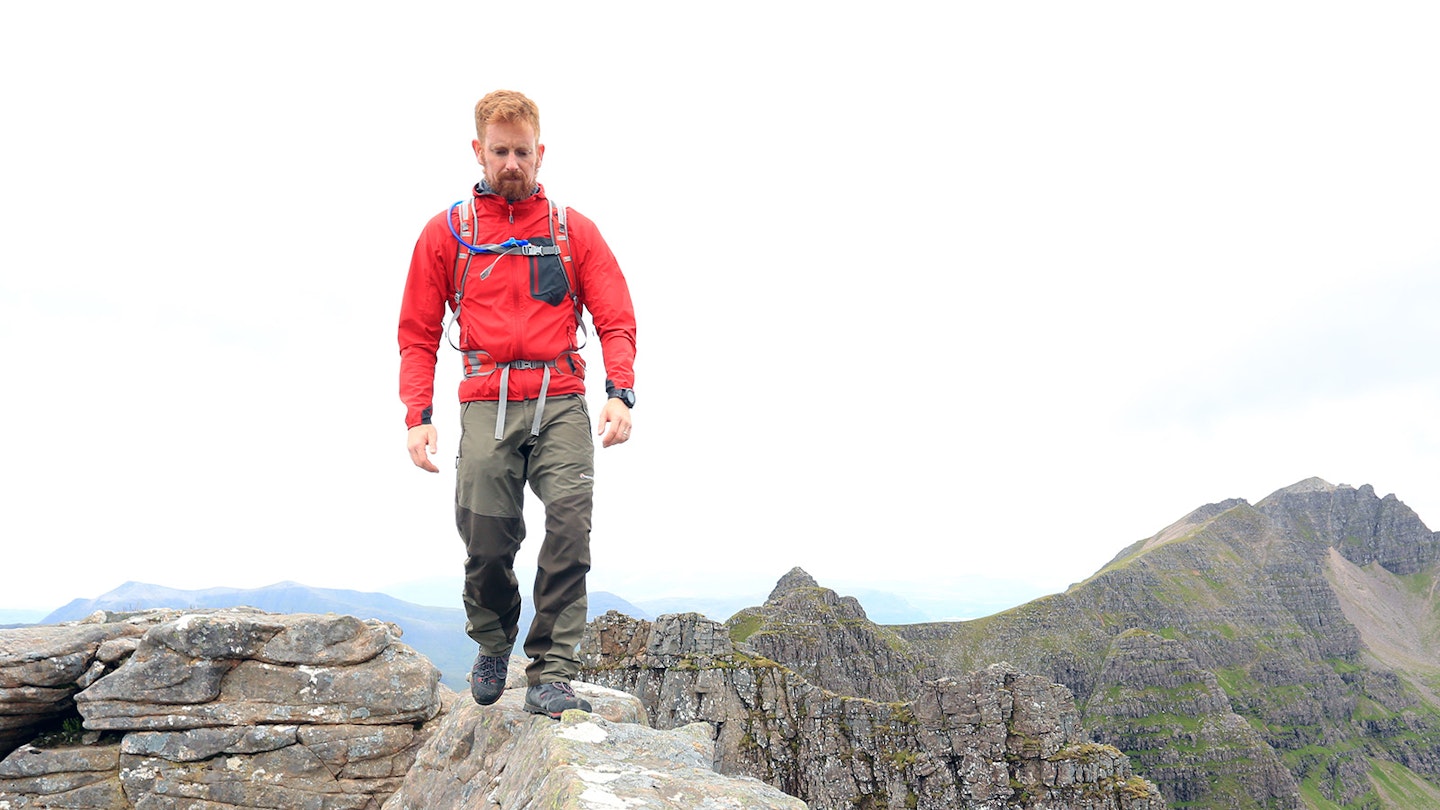
Water resistance: Softshells are generally water-resistant or ‘weatherproof’ rather than fully waterproof, relying on densely woven outer fabric and a durable water repellent (DWR) treatment to offer light to moderate water-resistance.
Wind resistance: This is the major benefit of softshell over fleece. Wind-resistance is often measured by CC or CFM. The higher the number, the less resistant the fabric is to wind. A lightweight fleece typically measures about 60 CFM, while most softshells are rated between 10 and 5 CFM.
Hood: Although it’s ultimately a matter of personal preference, a hood is generally a useful addition, but think about whether you’ll want it to fit comfortably under a hard shell. Technical softshell jackets often have peaked and/or helmet-compatible hoods, with adjustment so they can be cinched in tight.
Fabrics: Single layer softshells are more breathable thanks to the use of a double-weave wicking fabric. Two-layer softshells offer increased warmth and water-resistance as well as windproofing.
Breathability: This refers to how much moisture vapour can pass through a fabric. Softshells are far more breathable than even the best hard shells, making them ideal for sustained active use in the hills when you need a good level of weather protection but not a full-on waterproof.
Stretch: Many softshell fabrics incorporate elastane (also called spandex or Lycra) for enhanced freedom of movement. Two-way stretch fabrics stretch either vertically or horizontally. Four-way stretch fabrics stretch in both directions.
Weight and packed size: Softshells are often regarded as wear-all-day layers, which makes these factors less important – though overall weight and bulk are still considerations.
Pockets: Large pockets are great for storage. Napoleon-style pockets are placed in the centre of the jacket, next to the main zip, for easy access. Other jackets have side hand pockets, which are usually placed higher than normal so they can be used even if you’re wearing a rucksack.
Ventilation: Even the most breathable jackets can still get warm, so ventilation is vital. Some jackets feature pit zips or mesh-lined pockets, which can be opened to increase airflow. Wide cuffs that can be pushed up the forearm can also aid cooling.
Fit: Softshells tend to have a slimmer cut compared to hardshell jackets. But you should still ensure that they don’t feel tight across the shoulders or chest and that sleeves cover your wrists fully.
How we test
All hiking garments we test are subject to real-world situations. We don't go to the lab, brands have done that already. We put their creations up against nature, and our thorough gear testers. This way, we get a true feel for how outdoor gear performs and ultimately, whether it's a wise purchase.
Matt Jones and Ellie Clewlow are freelance gear testers for Live For The Outdoors and Trail Magazine. They have walked several long-distance backpacking trails in New Zealand, the USA and throughout the UK.
